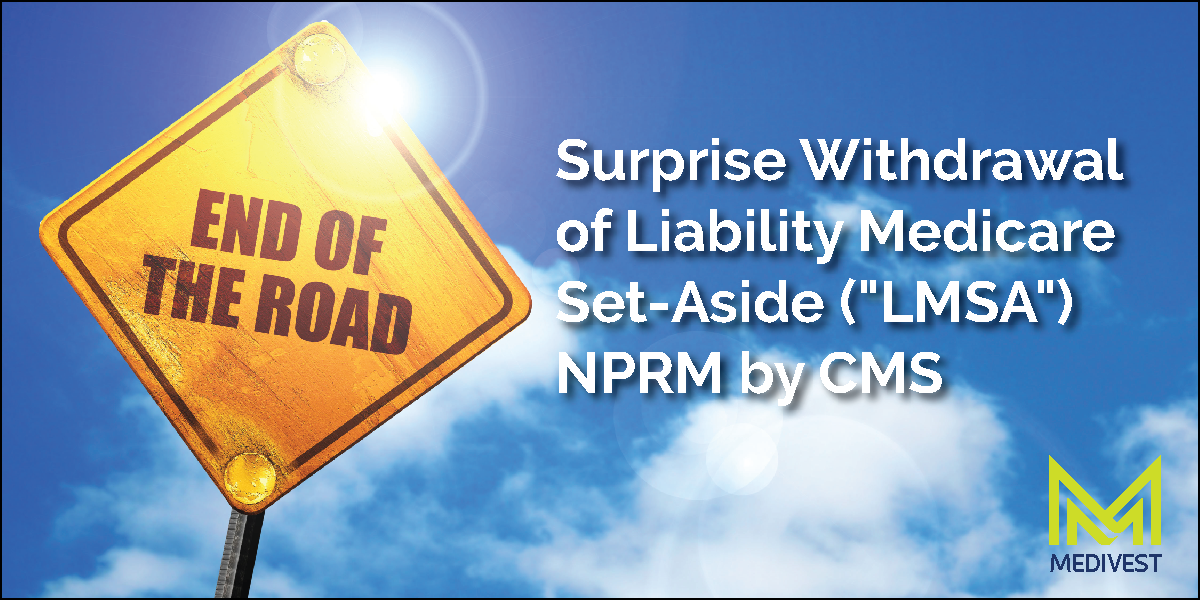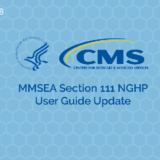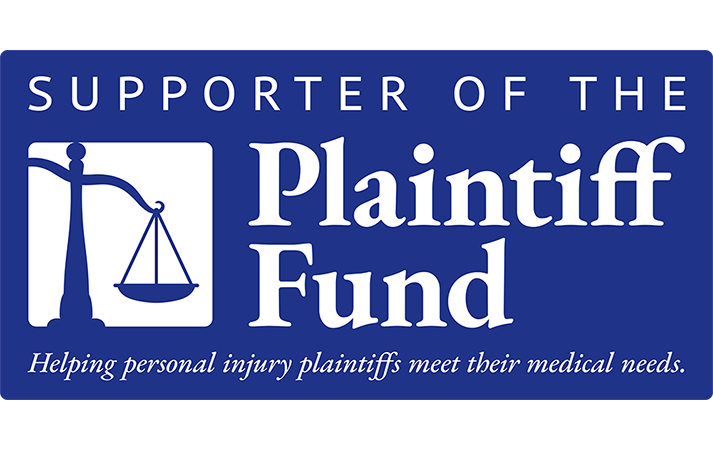Medivest will be joining the Ohio Association for Justice from November 2 - 4 for its annual Winter Convention. This year's Winter Convention kicks off the OAJ Advocate's Academy, a four-event sequence specifically designed as a training ground to accelerate the performance of newer plaintiffs' attorneys.
The Medivest Blog
On October 13, 2022, in a surprise move, CMS withdrew its Notice of Proposed Rulemaking (“NPRM”) pertaining to the protection of Medicare’s future interests in liability and other Non Group Health Plan (“NGHP”) settlements, judgments, awards, payments, or other arrangements (“Settlements”) without any official or unofficial comment. Many people in the Medicare Secondary Payer Compliance industry felt that this NPRM, most recently announced in 2018 and continued for several years, was finally going to add CMS’s clarifying “take” on how it would suggest settling parties reasonably consider and protect Medicare’s future interests in liability Settlements and that CMS would issue regulations or guidance specific to Liability Medicare Set-Asides (“LMSAs”).
The most recent 2018 iteration of the NPRM was designed to address protection of Medicare’s future interests in any NGHP Settlement, including removing what it considered obsolete regulations. For the past several years, stakeholders in the MSP compliance community have been waiting and speculating how such regulations could be devised to account for all the convoluted factors that exist in liability claims while adding clarity to steps CMS might suggest to be taken to protect Medicare’s interests in liability settlements.
Earlier in 2022, there had been a stakeholder meeting as well as a letter from the MARC coalition urging CMS to not move forward with the NPRM. It seems that the MSP compliance stakeholder community once again rallied and provided enough reason to give CMS pause. Some have called into question whether the MSP as enacted, gives CMS authority to issue regulations regarding liability futures, and some court decisions discussing liability MSAs and the need for an exhaustion of administrative remedies prior to a court of competent jurisdiction being able to review a LMSA proposal, may have also contributed to CMS’s decision to not move forward with this NPRM at this time.
The argument follows if federal courts have determined it is premature to review proposed LMSAs due to the failure of a party to exhaust their administrative remedies with CMS, then how could CMS insert its own administrative review process via guidance or regulation, unless the MSP were amended to provide for that authority. Examples of court cases discussing these issues, include Silva v. Burwell, 2017 WL 5891753 (D. N.M. 2017); Sipler v. Trans Am Trucking, Inc., 881 F.Supp. 2d 635 (D. N.J. 2012); Bruton v. Carnival Corporation, 2012 WL 1627729 (S.D. Fla. 2012); Abate v. Wal-Mart Stores East, L.P., 2020 WL 7027481 (W.D. Pa. November 30, 2020); and Stillwell v. State Farm, et. al., 2021 WL 4427081 (M.D. Fla., September 27, 2021).
TAKE AWAYS:
-
The MSP still forbids Medicare from making payment when a primary plan is in place meaning if there is a Settlement from a NGHP plan including from a liability carrier or self-insured defendant, Medicare has a statutory lien right under the MSP to recover its conditional payments minus procurement costs and can charge high interest and potentially even double damages for non-compliance.
-
If a current Medicare beneficiary settles a liability case, they should be informed about the MSP and a plan for future care should be set in place. The federal law is clear that conditional payments could arise prior to or after a settlement, so a risk tolerance cost benefit analysis should be performed between attorney and plaintiff as to the best steps to ensure Medicare is not prematurely billed.
-
Medicare has the right under the MSP to deny payment for injury related future Medicare covered medicals (items, services, and expenses, including Prescription Drug Expenses). Will it? We have seen times when it has flagged liability cases even while a liability claim or portion of a liability claim is pending (often because it believes the matter was settled but it was only settled with one of several defendants/carriers). While CMS does not seem to regularly do this, the goal for an attorney representing an injured plaintiff is to provide a settling plaintiff with enough information to make an informed decision regarding what is the best course of action for them and to document what decision was made after such informed consent was provided.
-
Only two federal circuits (3rd and 11th) have held Medicare Part C – Medicare Advantage Plans (MAPs) to have identical recovery rights as traditional Medicare under the MSP. However, those MAPs still have contractual subrogation rights, and attorneys representing Defendants, as well as attorneys representing their plaintiff clients, should evaluate whether any MAP plan or Medicare Part D – Prescription Drug Plan (PDP) have a subrogation/lien interest to be reimbursed for pre-settlement payments that were compensated by the Settlement.
-
Each attorney should provide their clients with enough information to help them assess their risks and to determine if denial of injury related future medicals or the potential for recovery of future conditional payments by Medicare is a risk they are willing to take. There are a wide range of products being offered to address MSP exposure and to protect Medicare’s interests in liability settlements based on the varying risk tolerance levels of your client. Count on Medivest to help you spot these intricacies so you can deliver prudent advice to your clients.
As background, the Medicare Secondary Payer Statute, found at 42 U.S.C. Section 1395y(b)(2), or most commonly known as the MSP, is the federal law enacted in 1980 that amended the Social Security Act and its Medicare specific amendments to make health plans other than Workers’ Compensation to be primary to Medicare. Workers’ Compensation plans were primary to Medicare from Medicare’s enactment into law in 1965. The MSP was Congress’ mandate to Medicare and The Centers for Medicare & Medicaid Services (“CMS”), the subagency that administers Medicare, forbidding Medicare from making payments when a primary plan was in place to promptly make payment. The primary plans are liability including self-insureds (and automobility BI), No Fault, and Worker’s Compensation and are known as the Non Group Health Plans (NGHP) to be distinguished from Group Health plans that offer health care insurance. While No Fault claims and Workers’ Compensation claims are typically paid immediately upon a claim being filed and accepted for Ongoing Responsibility for Medicals (“ORM”), liability carriers rarely accept responsibility to make payments early on in the life of a liability case. Liability carriers may choose to offer a settlement but almost never accepts liability.
Because the regulations under the MSP define prompt payment as within 120 days, the MSP also allows Medicare to make payments for medical services when a Medicare beneficiary will be compensated by a defendant in a liability case or their/its primary plan carrier under the condition that Medicare be able to recover those conditional payments it made that were claim related and compensated by a settlement, judgment, award, or other arrangement (collectively, “Settlement”). The MSP makes the primary plan Defendant, and any person or entity who receives a part of the Settlement proceeds, jointly and severally liable for repayment of conditional payments. The law also allows for interest and potentially double damages against liable people and entities that fail to make payment promptly.
The payment by any NGHP plan is what triggers the MSP’s recovery rights under the law regardless of whether liability is accepted or not. The protection of exposure to the MSP’s recovery rights is also commonly referred to as protecting Medicare’s past and future interests in a Settlement. Protecting Medicare’s past interests in a settlement includes providing notification of a claim and checking with CMS to determine whether it is claiming any payments it has made from the date of an injury up to the date of settlement are conditional payments to be reimbursed. Plaintiff attorneys typically provide this type of notification or hire third parties to confirm whether there are any conditional payments and then report settlement details to obtain a discount from the conditional payment amount and obtain a demand from CMS reflecting a deduction for pro-rated fees and expenses allowed under the regulations to the MSP.
The regulations to the MSP include some regulations that are generally applicable to any of the NGHP plans and some that are specific to Workers’ Compensation claims and Settlements. CMS has never promulgated regulations that are specific to liability claims or No Fault claims and Settlements. CMS has also issued guidance regarding the protection of Medicare’s future interests in Workers’ Compensation claims and Settlements via its Workers’ Compensation Medicare Set-Aside Arrangement (“WCMSA”) Reference Guide, now in version 3.7 issued June 6, 2022.
In 2012, CMS issued a Notice of Proposed Rulemaking regarding the protection of Medicare’s future interests in settlements intended to extend from the already regulated area of Workers’ Compensation (“WC”) Settlements to the other NGHP areas and even solicited comments from the MSP stakeholder community. After many entities pointed out the extreme differences between liability claims and WC claims such as issues of comparative or contributory negligence, the fact that liability claims often contain awards for Pain and Suffering, Loss of Enjoyment of Life, Loss of Consortium for married plaintiffs, etc., CMS ultimately withdrew that NPRM in 2014.
We’ve all heard how important it is to establish a plan for how our affairs are to be handled after we die. It also comes as no surprise that this plan is best established before we die. Though I have not died yet, all evidence seems to indicate that I will have an exceedingly difficult time addressing these details once I’m dead. Despite this evidence, it is estimated that around half of all Americans have no estate planning whatsoever. So, it should not come as a surprise that those with a Medicare Set-Aside account likewise have no clear plan established for what happens to any funds that may remain once they die. Not having a clear plan can create confusion and aggravation for those responsible to sort out or benefit from the settling of an estate. Addressing these questions at the outset can avoid a lot of trouble. So, what are the main considerations?
Reversionary Interest
Sometimes a settlement will establish a reversionary interest for any remaining Medicare-Set Aside funds. For instance, it may have been agreed that a percentage or all unused funds at the time of the claimant/applicant’s death are to be returned to the funding party. If true, this is a detail that the executor of the estate will want to know. Reversionary Interest arrangements are becoming more popular as a tool in settlements, as more and more Medicare Set-Asides are professionally administered with better cost controls and preservation.
Medicare Set-Asides held within Trusts may be Subject to Specific Rules
If the Medicare Set-Aside was placed in a Special Needs Trust (SNT) to protect access to means tested benefits like Medicaid, or was placed in some other type of trust, there may be a special arrangement already in place that governs what happens to the Medicare Set-Aside funds once the trust beneficiary passes away. If unsure, consult the trust officer as to whether they require any specific guidance, or if the final destiny of the MSA funds have been already decided by agreement or statute.
Tell the Professional Administrator Your Intentions
One advantage of professional administration is that it is more likely that some funds will survive the claimant/applicant due to the strategies a professional administrator leverages. Another advantage is that a professional administrator will disburse all funds it administers directly to the beneficiary designated by the claimant/applicant. Most professional administrators will request that the claimant/applicant designate their beneficiary in writing at the time the account is established. Still, it is not rare for a professional administrator to never receive the claimant/applicant’s written intent. This sometimes causes issues when the final MSA balance is disbursed to the claimant/applicant’s estate.
Also, sometimes life situations will change the intended beneficiary of the Medicare Set-Aside funds. If this changes, it is vitally important to record that change in writing with the professional administrator, to ensure that the claimant/applicant’s wishes are followed. Remember, the professional administrator can only follow the most recent guidance provided by the claimant/applicant.
Medicare’s Interest Must Be Considered
Family members and/or the executor of a claimant/applicant’s estate are typically motivated to settle arrangements as quickly as possible. However, it is important to remember that the Medicare Set-Aside was established to pay for Medicare allowable and injury-related expenses post settlement. Medical providers have a filing window in which to bill for medical services rendered or medications and supplies dispensed or sold. Often, allowable medical claims are received within the first 12 months following a claimant’s death, and the Centers for Medicare & Medicaid Services (CMS) expects the Medicare Set-Aside to pay as primary to Medicare for those claims, even if those claims are received after the claimant/applicant’s death. A best practice is to reserve the MSA funds for a period of twelve months (or until it is confirmed that final billing has taken place) to pay for allowable expenses before disbursing the MSA funds to the designated beneficiary(ies).
Conclusion
Medicare Set-Aside funds are a special type of asset that must be treated differently. They’re intended to protect a claimant/applicant’s access to Medicare benefits, as well as protect the Medicare Trust Funds from unlawfully paying when other funds are primary. But, like other assets, it’s important to declare and/or confirm where these funds are to go once the claimant/applicant passes away to avoid confusion and/or dispute over where those funds eventually go.
You can count on Medivest to help guide you through the complexities of Medicare Set-Aside arrangements. If you have questions about preparing or administering a MSA or you need consultation on any of our settlement services, call us at 877.725.2467 or reach out to us online here.
On Jan 11th, 2022 Centers for Medicare & Medicaid Services (CMS) updated its WCMSA Reference Guide to include information related to non-submit MSA products and how it views them in terms of exposure for Medicare. Then on March 15, 2022, CMS updated its Reference Guide again. We blogged about each updated guide here: WCMSA Reference Guide Version 3.6 Updates of Significance.
In the Workers’ Compensation arena, there are a number of MSA products that do not adhere to standard CMS methodology for preparing a Medicare Set-Aside allocation as outlined in the WCMSA Reference Guide. Since these products do not follow CMS methodology, submitting these types of products for approval will typically result in CMS countering higher to an amount aligned with CMS methodology standards. If a non-submit MSA product is used in WC settlements, CMS has indicated it will not step in and become the primary payer once the MSA funds have been exhausted unless the beneficiary can prove the MSA was properly funded and that all of the MSA funds were used in accordance with CMS guidelines. If CMS determines that the MSA was underfunded, it has indicated it will or at least may deny payment for case related, Medicare covered items, services, and expenses, up to the Medicare beneficiary’s net settlement amount.
The recent WCMSA reference guide updates demonstrate that Medicare believes some non-submit WCMSA allocation reports are potentially shifting the burden of payment for future medical items, treatment, and prescriptions to Medicare. While non-submit WCMSAs that meet workload review thresholds are not automatically deemed to not protect Medicare’s interest, it seems that CMS has created a presumption of this unless the injured worker can show otherwise. In comes solid allocation methodology and perhaps more importantly, the professional administrator, offering tools and assistance to show that both the amount was reasonable and that the money set aside was properly exhausted.
Why is this important for liability settlements? In the liability arena, CMS has yet to issue any new guidelines with respect on to how to handle liability settlements for a Medicare beneficiary. The May 25, 2011, Stalcup Memo from a CMS Regional Office in Texas indicated that there should be no difference between how Medicare’s interests would be protected between liability and Workers’ Compensation. It indicated that “The law requires that the Medicare Trust Funds be protected from payment of future services whether it is a Workers’ Compensation or liability case. There is no distinction in the law.” The Stalcup Memo announced that “CMS does expect the funds to be exhausted on otherwise Medicare covered and otherwise reimbursable services related to what was claimed and/or released before Medicare is ever billed.” It further cautions that “each attorney is going to have to decide, based on the specific facts of each of their cases, whether or not there is funding for future medicals and if so, a need to protect the Trust Funds.”
The new WCMSA Reference Guide has indicated that unless a prior memo is specifically referenced in the Reference Guide, it should not be relied upon. However, the Federal Statute, The Medicare Secondary Payer Statute, 42 U.S.C. Section 1395y(b) has itself not ever made a distinction between liability and Workers’ Compensation settlements and prohibits Medicare from making payment for any injuries compensated by a primary plan a/k/a Non Group Health Plan payment (including payments, settlements, judgments, awards, or other arrangements). Even though CMS has not promulgated specific regulations in the Code of Federal Regulations (CFR) for liability settlements and has not yet issued specific guidelines for liability settlements, liability is one of the primary plans outlined in the MSP statute that are considered primary to Medicare (Liability Insurance Including Self-Insureds (with the sub-set Automobile specifically mentioned in the CFR, No Fault, and Workers’ Compensation). In the Hinsinger v. Showboat Atlantic City, 420 N.J. Super. 15, 18 A.3d 229 (2011) case, the Superior Court of New Jersey found. . .
“. . . no reason to apply a different standard to set asides created with money obtained from third-party liability claims than it applies to set asides created with money obtained from workers’ compensation claims. The statutory and policy reasons for creating both of them are the same: to protect the government, and the Medicare system in particular, from paying medical bills for which the beneficiary has already received money from another source.”
The court reasoned that in the absence of specific liability regulations concerning the MSP, it was appropriate to analyze the regulations geared toward WC. This would seem like a reasonable starting point for CMS as it relates to futures. Of course, liability cases have different types of damages that can be awarded, most notably non-economic damages that are not awardable in WC cases. Causation issues and percentages of liability can limit the recovery for plaintiffs in liability cases with specific percentages being parsed out/negotiated in states with pure comparative negligence. Lastly, plaintiffs in liability can often argue that they were not Made Whole when the injuries and damages are present but the at fault party’s funding is limited by low policy limits.
These factors have not yet been addressed in any regulations or current guidance by CMS. However, when a WC settlement may not be reviewed by CMS because it is outside CMS workload review thresholds, CMS takes the position that parties must still consider Medicare’s interests in the settlement. Currently, liability settlements are still not being reviewed by CMS even though CMS had included reviews of liability MSA’s in a prior Request for Proposal when searching for its last WCRC MSA review contractor. Therefore, it makes sense that for liability settlements, parties should still be considering Medicare’s interests and especially so, when the settlement involves a Medicare beneficiary or one with a reasonable expectation of becoming a beneficiary within 30 months of the settlement. The WCMSA Reference Guide could contain part of the puzzle in helping an injured party being compensated for future medicals in planning their future care.
As of May 25, 2022, CMS has neither issued regulations nor new guidelines with respect to protecting Medicare’s interests when liability settlements compensate for future medicals covered by Medicare. CMS needs to provide such a roadmap if it is serious about protecting the Medicare Trust Funds for future generations. Because the MSP law itself sets the standard for the protection of Medicare, and the law and its regulations enable Medicare’s ability to deny payments and/or make conditional payment recovery, does it really make sense to ignore planning the injury related future care of your client even when the regulatory agency has been slow to act?
Each attorney should provide their clients with enough information to help them assess their risks and to determine if denial of injury related future medicals or the potential for recovery of future conditional payments by Medicare is a risk they are willing to take. There are a wide range of products being offered to address MSP exposure and to protect Medicare’s interests in liability settlements based on the varying risk tolerance levels of your client. Count on Medivest to help you spot these intricacies so you can deliver prudent advice to your clients.
Economic inflation is a major topic of discussion these days. Just about everything, from gas to food, carries a higher price tag than it did a year ago. Some say this is a temporary side effect of economic recovery. Others argue that much of this may be here to stay. Regardless, most are mindful of the impact inflation is having on the average American’s buying power.
No one should be surprised to hear that the cost of medical care has an inflationary rate as well. Well before the present economic factors and policy decisions precipitated general inflation, medical costs have increased year over year by a rate that outstrips the general economic rate of inflation. According to the U.S. Bureau of Labor Statistics, medical care costs have increased 100.86% since 2000. That’s a doubling of medical costs in two decades! Bottom line: medical care will be more expensive in the future.
This brings us to a serious problem most medical settlements face. Often, the final portion of the settlement award designated for medical care is determined by looking at present day costs and the life expectancy of the beneficiary. Basically, it’s an annual expense multiplied by years of expected need. This, for instance, is generally how Medicare set-aside allocations are calculated, but the calculation is frequently applied to the entire medical portion of the settlement. Rarely is the inflationary rate of those medical costs considered.
This is why I’m calling inflation the medical settlement’s “silent killer”. In the year or two following settlement, it may seem like the funding is adequate. But as time marches on, each dollar reserved for medical expenses buys a little less care, fewer drugs, and fewer supplies. Soon, a beneficiary must find other money, cheaper alternatives, or simply treat less frequently. Factor in that many settlements aren’t funded at full value and that the beneficiary is buying services in an insurance-driven ecosystem as a cash payer, and you quickly see the long-term problem.
Factoring inflation into the settlement would be one way to mitigate much of the problem. But, if we’re going to be realistic, we must acknowledge that there are many factors that create a significant headwind to the “more money” solution. There are also other considerations: What rates are reasonable? How does the beneficiary avoid being gouged? What about coordinating with another policy that may be able to pay instead? Then there’s the need to keep settlement funds intended to consider Medicare’s interest separate and properly accounted for to protect the beneficiary’s Medicare benefit. If healthcare cost inflation is a silent killer, these other considerations are death by a thousand cuts.
Anyone who’s lived by a budget understands that when more money is not an option, keeping spending under control is essential to not running out at the end of the month. One must stretch their settlement proceeds if they are going to last, or at least last longer. This is where a professional administrator can make all the difference. Professional administrators are typically thought of as the go-to option for making sure a Medicare set-aside (MSA) arrangement is used properly. As a matter of fact, CMS highly recommends professional administration of MSAs (MSA Reference Guide v3.6, 17.1). The professional administrator uses the MSA according to CMS’ expectations and meets the beneficiary’s obligation to attest annually to the MSA’s proper use, thereby protecting the beneficiary’s Medicare benefit (as CMS can suspend benefits if it determines that improper use of the MSA represents a burden shift to Medicare). The professional administrator can also stretch MSA dollars to help them last.
So, we know that professional administrators are a great option for handling the compliance obligations placed on MSA money. But what about the “silent killer” problem? What can professional administrators do to address the concern of healthcare cost inflation? It comes down to our budget reference above and all the ways a professional administrator is well-positioned to reduce the spend and keep the funds solvent. Yes, professional administrators protect MSAs, but they also step between the beneficiary and the healthcare system in any settlement where future medicals are contemplated.
Consider the similarities between the experience of a beneficiary responsible for MSA funds and a beneficiary responsible for general future medical funds: The beneficiary is going to be a cash payer and likely pay top dollar. They are likely to receive bill after bill from their medical providers, expecting them to cut the check in a timely fashion to prevent interruption of care. They might have other insurance plans that could pay if benefits were properly coordinated. They’re probably not experienced at handling a lump sum of cash all at once and may struggle to use the medical settlement proceeds as intended. Fortunately, a professional administrator can provide better outcomes in all these situations.
A professional administrator steps between the beneficiary and the healthcare world where payment is concerned. Rates are negotiated. Incorrect bill coding, duplicate charges, and other types of billing mistakes are identified and addressed. All payment concerns, bills, coordination with other payers, etc. is taken care of on behalf of the beneficiary. And the money is used for what it is intended: medical care. The result is the preservation of settlement funds as a hedge against the fatal climb of healthcare cost inflation. In many cases, the medical proceeds will remain solvent for the life of the beneficiary, depending on the nature of their injury expenses and the cost controls available.
It’s fairly simple and affordable to set up professional administration of future medical settlement proceeds, and Medivest can help you integrate professional administration into your cases. From the simple straightforward claims to the most complex, Medivest has developed resolutions that address an array of post-settlement concerns, especially healthcare cost inflation. Contact us today for a free case consultation.
On November 16, 2021, the State of California’s Medicaid Agency, the Department of Health Care Services (DHCS or Medi-Cal), issued an All County Welfare Directors Letter (ACWDL or Letter) number 21-26 as a memo to all counties and people who administer various state based benefits, including all Medi-Cal Program Specialists/Liaisons.
The Letter provides clarification on Medicare Set-Aside (MSA) funds, as defined by CMS in the Workers’ Compensation realm. The primary message is that “MSAs, also called Workers’ Compensation Medicare Set-Aside Arrangement Accounts (WCMSA), are not countable as income and property on the basis of their unavailability when determining an individual’s eligibility for Medi-Cal.”
This can be significant for several reasons outlined in the Takeaways section. Traditionally, an injured party that was otherwise eligible for need based benefits would be advised by their attorney to have a 1st Party Special Needs Trust of some type (individual or Pooled Trust – together referred to here as an SNT) established to help assure the eligibility of those benefits at that time or in the future. However, there may be times when the cost of establishing such an SNT might be cost prohibitive compared to the value of the benefits to be protected.
Summary
The Letter describes that because the funds in the MSA account are to be used for their intended purpose, covering the costs of future medical needs [that are injury related and Medicare covered], they should be considered unavailable income and not countable when determining an individual’s eligibility for Non-Modified Adjusted Gross Income (MAGI) programs. However, the Letter indicates that it is important to note that interest or dividends generated by the interest-bearing account should be considered available income for MAGI eligibility determination.
The Letter explains that MSAs had previously been determined to not be countable as property pursuant to a previous All County Welfare Directors letter numbered 90-01 from 1990. “MSA funds are considered unavailable property under ACWDL 90-01 (January 5, 1990), Section 50402 of that letter.”
The Letter also provides guidance to California counties on MSAs regarding:
-
-
MAGI eligibility
-
Non-MAGI eligibility concerning:
-
Property
-
Income
-
-
Tasks that are County responsibilities
-
Tasks that are NOT County responsibilities
-
The full ACWDL 21-26 Letter with additional details and information is available here.
Takeaways
-
This Letter does not discuss settlements that exceed the WCMSA amount. Settlements that exceed the WCMSA amount meaning they exceed the injury related Medicare covered medical items, services, and expenses reasonably expected for the injured party and that are paid outside the WCMSA, might disqualify the injured party from Medi-Cal benefits.
-
The Letter also does not discuss that the injured party’s need based benefits may be jeopardized if the injured party moves to another state without taking steps to address the eligibility of the new state’s Medicaid benefits via the use of an SNT within the required time frame to afford such protection.
-
The information in this Letter may come in handy for certain cases where the cost of a SNT is a prohibitive factor that would affect whether a smaller Workers’ Compensation settlement could proceed.
-
The letter does not make it clear how Medi-Cal would view a liability MSA (LMSA), i.e., an MSA allocation report and arrangement for administration pursuant to the settlement of a liability case.
-
As always, you should consult with an attorney licensed in the state where the settlement occurs (as well as disclose to the injured party to consult with an attorney specializing in the protection of need based benefits for the state where the settlement occurs and in any state they plan to move to ahead of their move) to confirm their rights, their entitlement to any specific benefits, and so that they understand that state need based benefit eligibility varies and other states’ laws likely do not afford this same protection.
Count on Medivest to help guide you through some of the complexities associated with Workers’ Compensation and liability settlements that involve some evaluation of Medicare Secondary Payer Act (MSP) compliance, when you are not sure whether a Medicare Set-Aside arrangement should be utilized, or when need based benefits are in the picture or may be in the injured party’s future.
On Thursday, February 17 at 1 pm EST, Centers for Medicare & Medicaid Services (CMS) will host a webinar regarding Workers’ Compensation Medicare Set-Aside (WCMSA). The full notice can be read below:
CMS will be hosting a webinar to discuss a variety of WCMSA topics, including a summary of what’s new in Medicare set-asides, and addressing questions related to the inclusion of treatments, application of state rules, re-reviews/amended reviews and more. The webinar format will be opening remarks and a presentation by CMS followed by a live question and answer session with representatives from CMS.
Date: Thursday, February 17, 2022
Time: 1:00 PM ET
Webinar URL: https://www.mymeetings.com/nc/join.php?i=PWXW2628369&p=6930242&t=c
and
Conference Dial-In: 800-779-1251
Conference Passcode: 6930242
Please note that for this webinar you will need to access the webinar link and dial in using the information above to access the visual and audio portion of the presentation. Due to the number of participants please dial in at least 15 minutes prior to the start of the presentation.
Additional information about recent updates from CMS about WCMSAs can be found here. If you have questions on how topics discussed in this webinar may affect your clients, please contact Medivest here or call us at 877.725.2467.
1. Section 4.3 of the new WCMSA Reference Guide does not constitute new policy at CMS or new risk for settlement stakeholders. The WCMSA Reference Guide has for a long time maintained the same position on and response to submission and non-submission of MSAs that meet the submission threshold. It is, however, the first time CMS has specifically referenced MSA products branded as “evidence-based” or “non-submit” and given an opinion on those products.
2. CMS is communicating its concern that MSAs specifically designed to forego the submission/approval process may inadequately consider Medicare’s interest. While it is reasonable for CMS to maintain such a concern, the assumption that any MSA not approved by CMS is inadequate is problematic and contradictory to their position on MSAs that do not meet review thresholds. And submission/approval for MSAs that do meet review thresholds is still voluntary.
3. The party with the most to lose is the beneficiary. The primary consequence referenced in 4.3 is denial of payment for the beneficiary’s injury-related care in the event of MSA exhaustion. CMS says it will continue to deny payment until the entire net settlement has been fully spent down (not the total MSA amount). This could occur in events of permanent exhaustion or during temporary exhaustion periods when the beneficiary’s MSA is exhausted until the next funding payment is received. Keep in mind that this doesn’t apply to MSAs that do not meet the review threshold. Also, there is an appeal process for denial of payment. But the greatest risk-bearer is the applicant.
4. Since MSA exhaustion represents the greatest risk to the applicant, a program of proper funds administration is preferable. A burden shift to Medicare can only occur once Medicare becomes the primary payer. A MSA that remains solvent will maintain Medicare’s payment position as secondary indefinitely. While it is impossible to foresee every expense that a MSA may incur over an applicant’s lifetime, a properly funded MSA in the hands of a competent administrator is the best protection of the interests of both Medicare and the applicant.
5. Thoughtful consideration should be given to the adequacy of an evidence-based or non-submit program. It is entirely possible to produce a fully adequate and reasonable MSA without CMS’s review and approval. However, not all products are created equally. It’s important to be confident that the methodology in use produces MSAs that consider Medicare’s interests sufficiently.
6. The best indemnification is a reasonable MSA properly administered. CMS mentions indemnification in their 4.3 language. Many MSA vendors pair specific indemnification language with their non-submit products. The purpose of the indemnification language is to provide stakeholders with a layer of protection for bypassing CMS approval. Those stakeholders will want to pay special attention to any loopholes that condition any protection on the behavior of the beneficiary. Thoughtfully consider indemnification language before going the non-submit route. And as mentioned in #4 above, much of the risk produced by not submitting MSAs to CMS is mitigated by properly written MSAs administered by a competent professional.
Recommendation
Section 4.3 of the latest WCMSA Reference Guide does not produce anything particularly new. Still, it’s important to cover all the bases. For maximum avoidance of risk, submit MSAs to CMS for review that meets the review threshold. If submission is not palatable, it is still possible to write fully adequate MSAs that reasonably consider Medicare’s interests. The important questions to ask are: 1) Does the writing methodology stand on its own apart from CMS submission, rather than taking advantage of the lack of oversight to unreasonably shave costs? 2) If there is indemnification language provided with the non-submit MSA, is it heavily contingent on exceptions that weaken the protection it purports to provide? 3) Understanding that the risk mainly falls in the lap of the beneficiary and is triggered at exhaustion, is a competent administrator with the ability to contain medical costs in the picture to make sure the MSA has the best chance of remaining solvent throughout the applicant’s life?
For a downloadable copy of this piece please click here.
Medicare Set-Aside (MSA) arrangement beneficiaries have some very specific limitations when it comes to how their money is spent. When it comes to choosing a provider, the options are wide open. A beneficiary will often deal with who they know or a provider that is close to their home. As a cash payer with limited funds to cover all future Medicare allowable and injury related expenses, the wrong choice can put a beneficiary in a world of hurt. Here are some best practices when choosing a provider to treat an injury post settlement and using Medicare Set-Aside funds:
Choose a Medicare Certified Provider
While MSA funds can be used to pay any provider that supplies covered care related to the injury, not every provider is able to bill Medicare for these medical goods or services. If a beneficiary properly exhausts their MSA funds in a given year (when the MSA is funded with a structured annuity and receives deposits periodically) or the MSA funds have permanently exhausted, Medicare will assume responsibility to pay Medicare covered expenses related to the injury and coordinate with any other applicable insurance plan. If the provider is not Medicare certified, that provider will not be paid by Medicare even if the beneficiary has maintained Medicare coverage. This can leave the beneficiary as the responsible party if no other insurance benefit is available. We recommend choosing Medicare certified providers to avoid such situations.
Choose Providers Who Offer Discounted Cash Rates
A beneficiary with MSA funds is considered a cash payer by medical providers. There is no “in network” policy with set payment rates for cash payers. If the provider is not accustomed to dealing with patients without a primary medical insurance plan, the provider may charge its full retail rate. A beneficiary may have a difficult time negotiating a medical bill on their own or in advance of services being completed and this can add up to a significant expenditure of MSA funds. It is best to ask about cash rates and if any discounts are available when contacting a new provider.
Avoid Providers That Don’t Normally Bill Insurance
Billing insurance for medical services means increased access to patients because it agrees to a negotiated contract that reduces the average cost of services. Some providers opt to avoid insurance altogether. This allows these providers to charge higher rates for services because there is no set rate or maximum charge. Moreover, these providers will only take the beneficiary’s cash even if they have a group health plan or public benefit. This lack of flexibility is often costly for the beneficiary.
Choose Providers Experienced with Traumatic Injuries
This may seem obvious, but as a professional administrator, Medivest sees beneficiaries choosing providers that are not familiar with treating traumatic injuries post-settlement. This can be problematic from a communication standpoint (while the beneficiary and the administrator know the injury backwards and forwards, the doctor may see very few of these cases) and it can make billing and payment more difficult or present difficulties when seeking a referral to a specialists. The most efficient approach is to choose a provider that KNOWS the beneficiary’s type of injury from direct experience.
Choose a Flexible Provider
Here are a few common red flag phrases from providers that limit the beneficiary’s options:
“We only bill Medicare.”
“We don’t deal with liability injuries.”
“We never treat workers’ compensation injuries.”
“We only treat workers’ compensation injuries.”
“We don’t bill third parties.”
“We don’t take cash.”
Providers experienced with multiple scenarios provide the beneficiary with options when it comes to treatment and payment.
Beware of Signing Rate Agreements for Specific Services
A beneficiary that is not acquainted with the typical market rate or medical fee schedules is advised to run away from any agreement or contract that would lock them into a guaranteed payment rate. A rate agreement of this nature can put the beneficiary on the hook for significantly inflated cost. If they’re using a professional administrator (and they should be), it can negotiate with the provider directly on the beneficiary’s behalf. Don’t confuse this document with an authorization form to bill insurance or a notification that the beneficiary is responsible for any non-covered services. They’re not the same thing.
Avoid buying OTC Supplements or Supplies Directly from a Provider
Over-the-counter supplements or supplies that are sold directly by a provider typically come with a markup and can usually be found cheaper elsewhere. Your providers may recommend a device or a supplement that they conveniently stocks for sale. You should be aware that the providers may be looking to increase their margin per patient. Take your doctor’s advice and do your research. If the recommended supply of supplement makes sense, shop around for a better price.
Do Not Be Discouraged if a Provider Rejects Payment from the MSA
Most providers within the US Healthcare system do not understand what a Medicare Set-Aside is or what it is for. They are frequently hesitant to accept it as a form of payment. They may mistake it for a Medicare Part C plan or out of network benefit. Sometimes, they are highly suspicious and cannot believe that Medicare is not the primary payer. It can be daunting for a beneficiary to be in the position of educating a provider’s billing office. A professional administrator is a great resource for coordinating benefits and having the MSA be the primary payment source, when applicable.
Conclusion
A MSA beneficiary with a persistent injury deserves the best care possible, but also needs to be positioned to ensure the MSA funds last. And if they don’t last, that the beneficiary has a proper safety net in place. Part of this strategy includes finding the right providers to not only address the injury with competence but also provide affordable and flexible options to ensure continuity of care and protect the beneficiary from having to dip into other settlement or personal funds. Even when Medicare is responsible for covering injury care, the beneficiary can be billed for any deductible, copay, or coinsurance balances.
Last, we’d be remiss if we didn’t point out that a professional administrator addresses these challenges every day and not only talks to a beneficiary’s provider on their behalf, but will also coordinate benefits with other insurance, communicate with CMS about the MSA, and negotiate rates in ways a patient will struggle to match. If you or your client is a current or future beneficiary of a Medicare Set-Aside, don’t hesitate to contact Medivest. We help thousands of beneficiaries avoid these and many other MSA pitfalls.
Medivest will be joining the Ohio Association for Justice June 14 -18 for the biggest event in Ohio plaintiff’s law, the 2021 OAJ Annual Convention. This year’s Convention is designed with flexibility in mind, with a hybrid option to attend in-person and virtually as well as a virtual-only option. Virtual participants will receive links to all live streaming options and complimentary access to the Annual Convention streaming library through the end of September. Tune in for your favorite sessions and earn the rest of your CLEs where you want, when you want. Earn up to half of your biennial CLEs while networking and building connections with plaintiff’s attorneys from around the state and midwest.
Director of Sales, Scott Mattingly will be in attendance. Please visit him at the Medivest booth for information regarding Professional Administration, Lien Resolution, Medicare Set-Aside Reports, and all of Medivest’s settlement solutions for workers’ compensation and liability cases. For more information on the event please visit https://www.oajconvention.com/.














